The Australian Bureau of Statistics on Tuesday released its overseas short-term arrivals and departures figures for August.
The number of short-term visitor arrivals rose by 6.4% in the year to August, whereas short-term resident departures only rose by 0.7%. The ratio of annual arrivals to departures also rose to 81.5%:
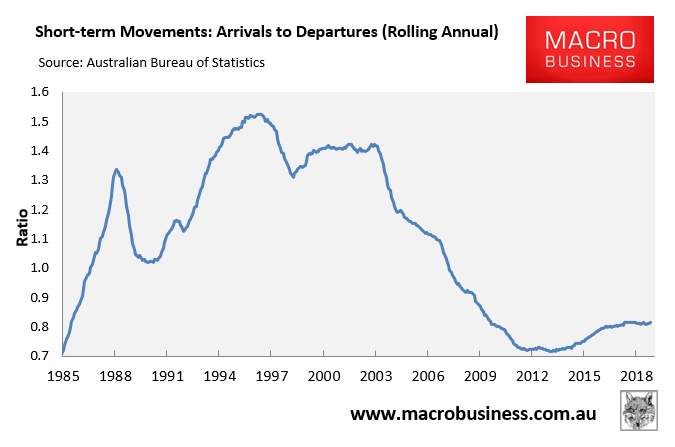
That said, net short-term arrivals remain heavily in deficit:
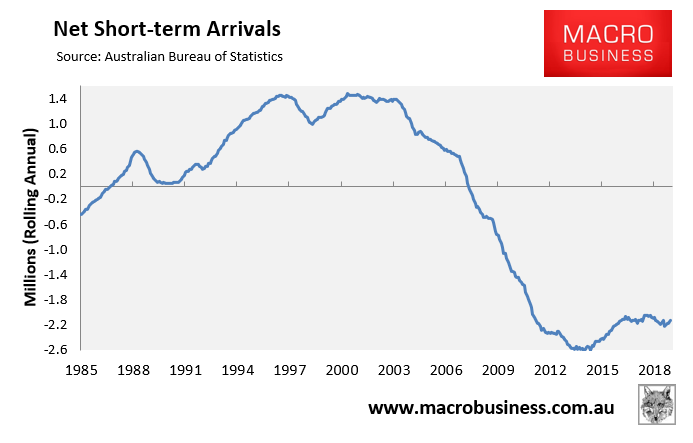
In the year to August 2019, 9.4 million inbound visitors arrived in Australia over the year – a 73% increase on a decade ago (5.4 million). The number of Australians traveling overseas was 11.5 million – an 86% increase on 10 years ago (6.2 million):
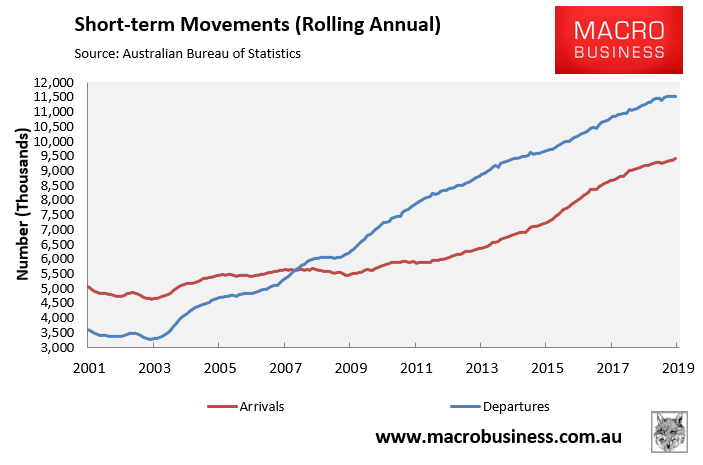
The next chart shows that short-term arrivals were dominated by holiday makers and those visiting friends and families:
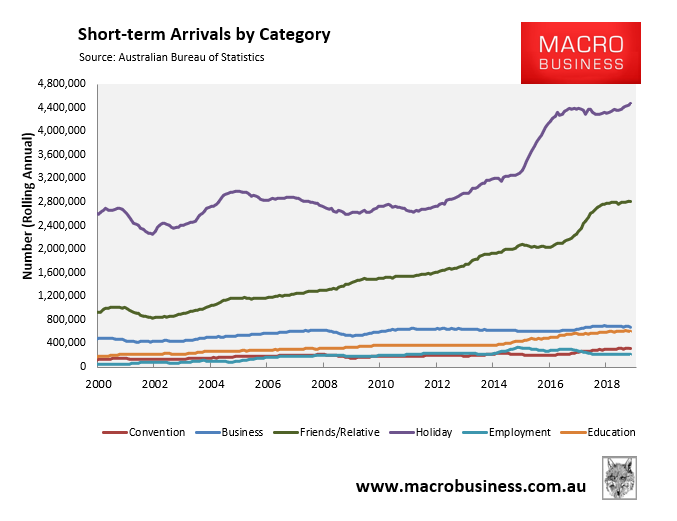
As shown below, most foreign visitors to Australia came from NE Asia, which accounted for 30% of arrivals:
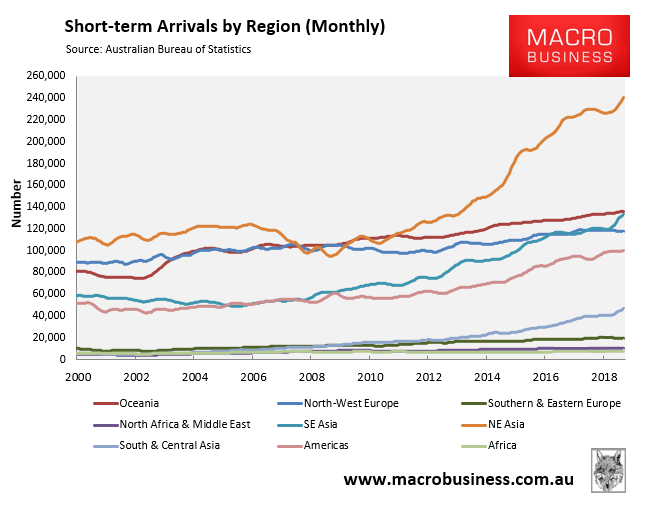
In particular, arrivals from China surged, hitting a record high 127,900 in August:
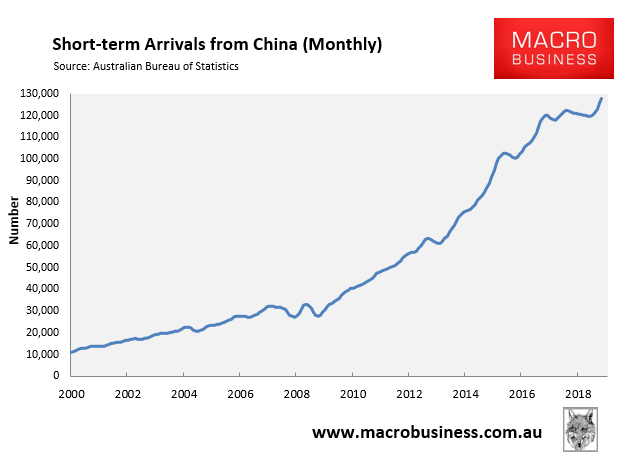
Chinese arrivals also hit an all-time high 1.46 million in the year to August, accounting for 15.5% of total arrivals to Australia:
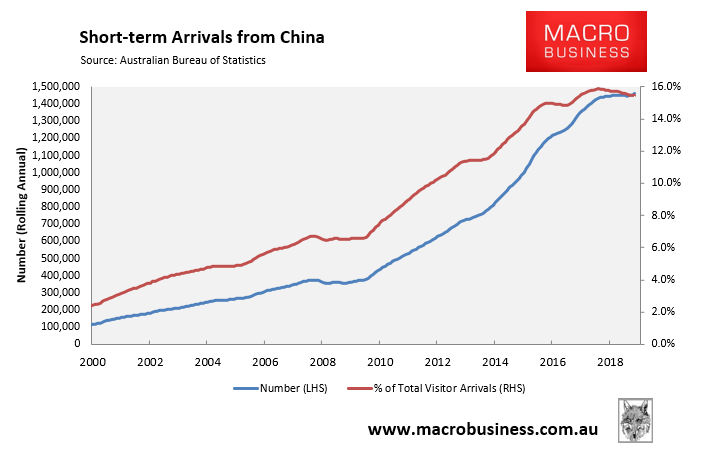
Therefore, while the number of Chinese international students is beginning to wane, as evident by the 3.3% decline in student visa applications in 2018-19, overall arrivals from China continue to boom, driven by tourism and visits to family members living in Australia.

